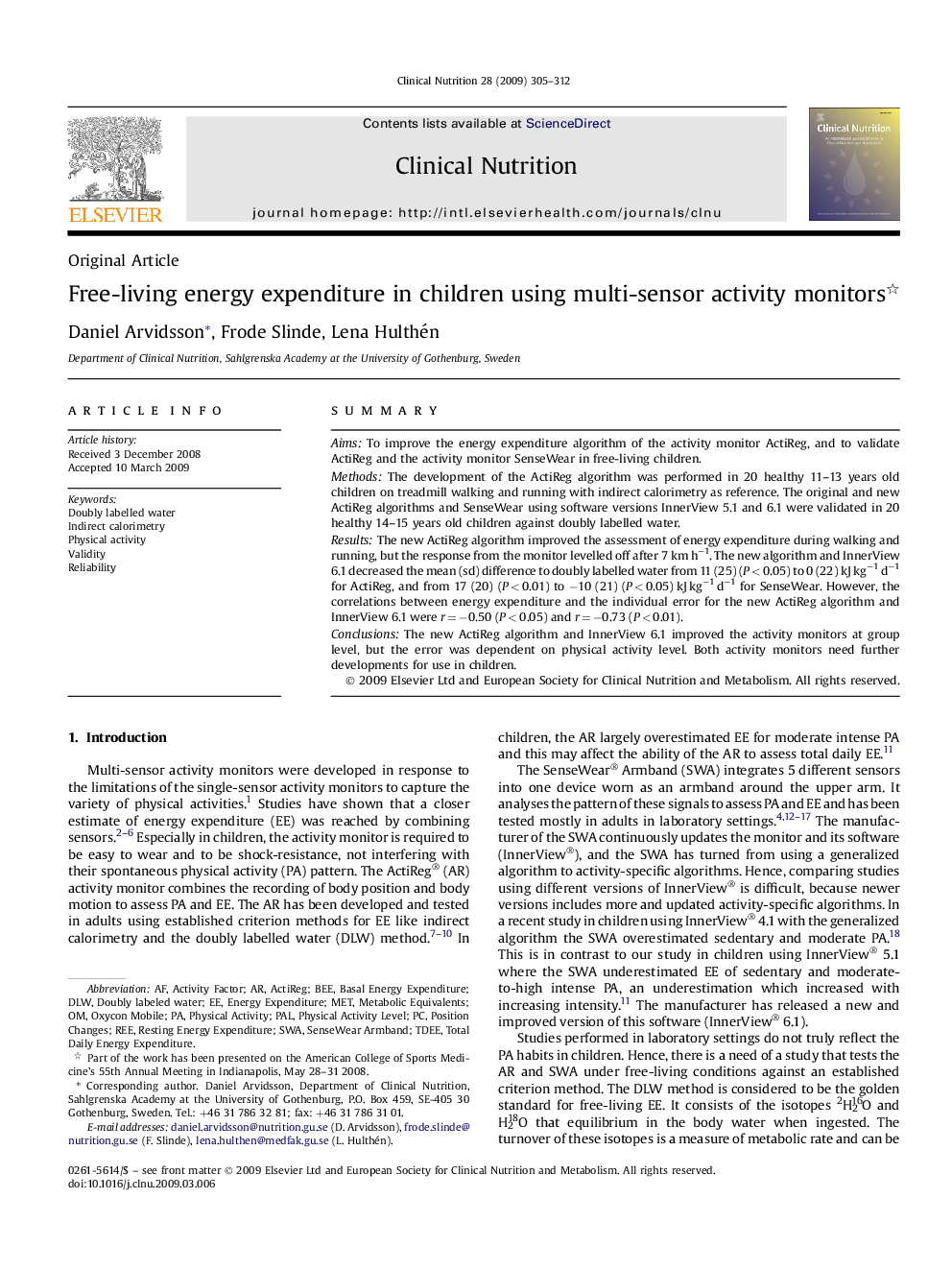| Article ID | Journal | Published Year | Pages | File Type |
|---|---|---|---|---|
| 2688535 | Clinical Nutrition | 2009 | 8 Pages |
SummaryAimsTo improve the energy expenditure algorithm of the activity monitor ActiReg, and to validate ActiReg and the activity monitor SenseWear in free-living children.MethodsThe development of the ActiReg algorithm was performed in 20 healthy 11–13 years old children on treadmill walking and running with indirect calorimetry as reference. The original and new ActiReg algorithms and SenseWear using software versions InnerView 5.1 and 6.1 were validated in 20 healthy 14–15 years old children against doubly labelled water.ResultsThe new ActiReg algorithm improved the assessment of energy expenditure during walking and running, but the response from the monitor levelled off after 7 km h−1. The new algorithm and InnerView 6.1 decreased the mean (sd) difference to doubly labelled water from 11 (25) (P < 0.05) to 0 (22) kJ kg−1 d−1 for ActiReg, and from 17 (20) (P < 0.01) to −10 (21) (P < 0.05) kJ kg−1 d−1 for SenseWear. However, the correlations between energy expenditure and the individual error for the new ActiReg algorithm and InnerView 6.1 were r = −0.50 (P < 0.05) and r = −0.73 (P < 0.01).ConclusionsThe new ActiReg algorithm and InnerView 6.1 improved the activity monitors at group level, but the error was dependent on physical activity level. Both activity monitors need further developments for use in children.
